
Mask carvers are one of Bali’s most important artisans. Through their delicate creations, these skilled craftsmen give life to the characters on Bali’s ritual dance stage. Of course, on the island of the gods, a mask is more than just a mask: it is a sacred object, a medium, and a tool of transformation.
Masks have a long history in Bali, the most ‘indigenous’ example of which is found in Kintamani in the Bali Aga (ancient Bali) village of Trunyan, which straddles the banks of Lake Batur. During the anniversary (odalan) of their village temple, Pura Ratu Pancering Jagat, a unique ritual performance takes place called Barong Brutuk, in which 21 dancers perform dressed in wild and shaggy banana leaf costumes, taking on different characters of an ancient story, depicted through their simple, painted masks made of coconut shells.
Balinese masks as we know them today were first recorded in the ‘Prasati Bebetin’ (Bebetin inscriptions), noting that they were already in use around the late 9th century. Over the centuries, the art form only grew in importance, as masks became central to the courtly entertainment of the royals, and indeed as religious or sacred performances.
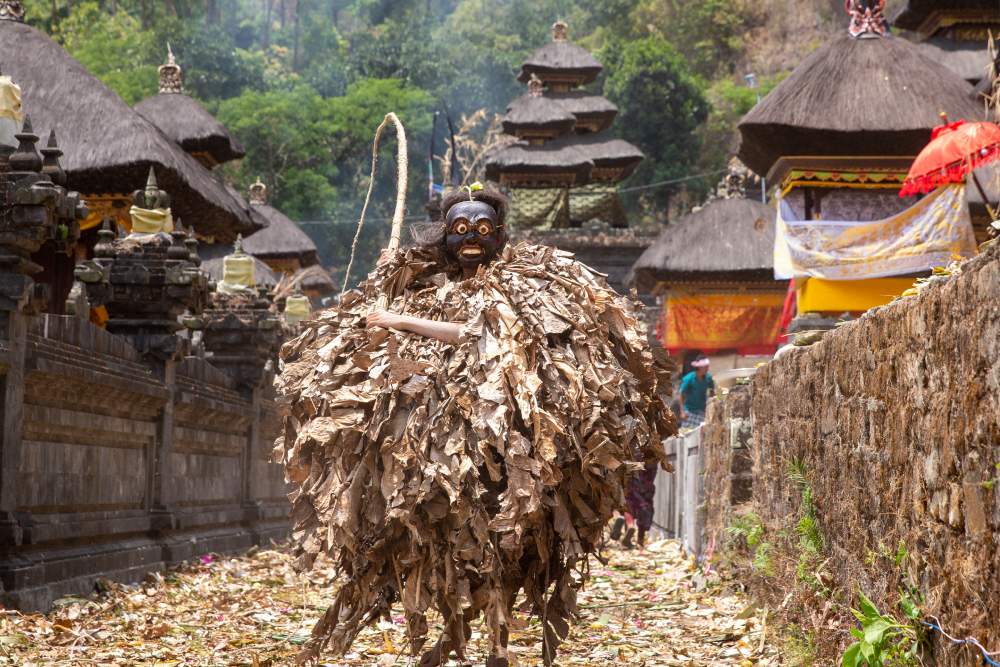
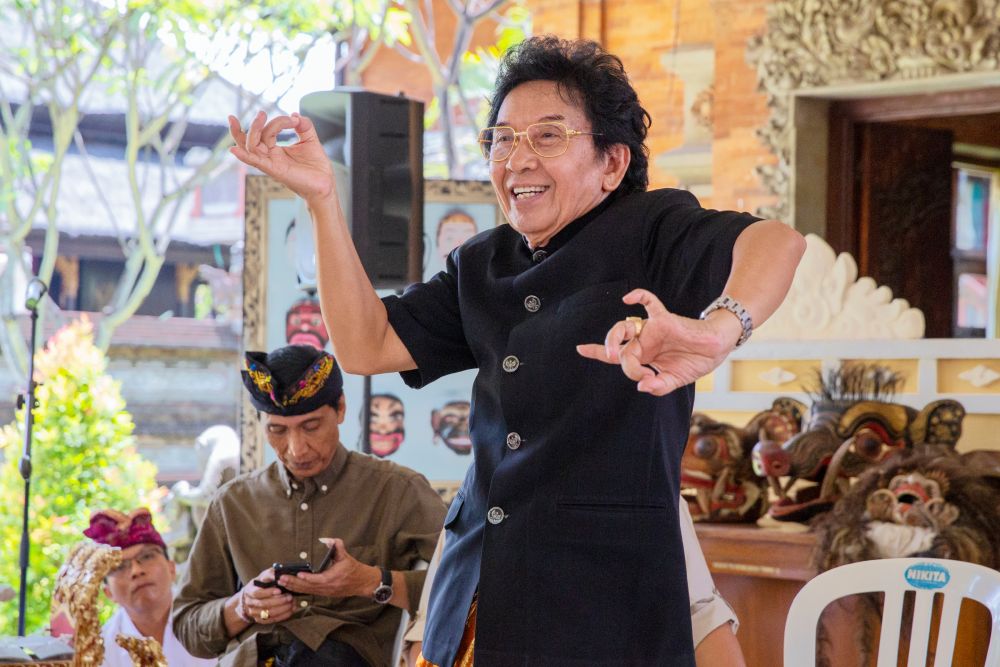
Photo by IB Putra Adnyana
“Mask dancing is not only a lively pastime to entertain communities”, writes Professor I Made Bandem in his book ‘Masks of Bali: Between Heaven and Hell.’ “But also a didactic tool that directly instructs in the many facets of Balinese Hinduism – ethics, morality, religious principles, etiquette, ancestry, myths, stories and history.” Professor Bandem notes nine specific traditions or types of mask dance in Bali, these are Brutuk, Barong, Barong Landung, Borong Dingkling, Wayang Wong, Topeng Rangda, Topeng Bidadari, Topeng Gajah Mada and Topeng Babad. These are distinguished by their iconography and their functions.
The aforementioned dance traditions transcend mere performance. Traditionally, there is a religious function and purpose to them all, and as such the masks too are sacred, elevating them beyond mere ‘object’ or ‘prop’. In practice, the masks be taksu or tenget, magically charged, to act as a bridge and connection between Bali’s seen and unseen worlds, sekala and niskala; allowing its wearer to access forces from the other side, or indeed vice versa. As such, the process of a mask’s creation is ever-important, and it takes more than just ‘skill’ to ensure that it is truly up for its holy role.
Making of a Sacred Mask
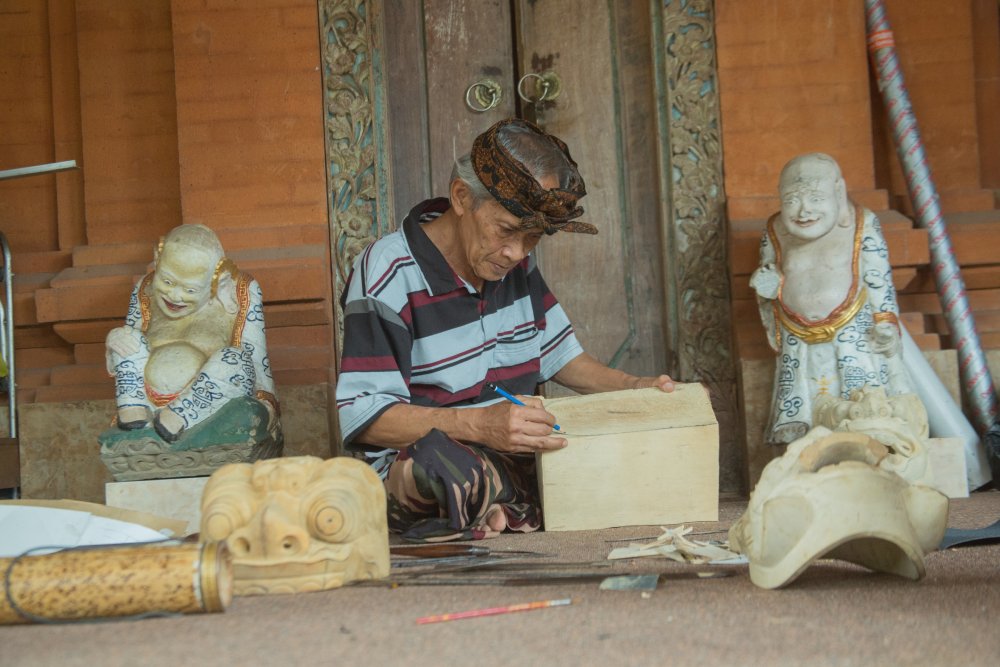
Balinese mask carving is an ancient craft, often passed down from generation to generation. Mask carvers are known as undagi tapel and those crafting the most sacred masks (sungsungan) were often from a higher caste, as the craft requires more than just a skill of hands, it is involves many religious processes and rituals. Like many of Bali’s artisanal crafts, mask-making is mainly centred in one village: Singapadu. The village began making barong masks around the 14th century, and much later developed a greater repertoire upon the arrival of I Dewa Agung Api, a descendant of Klungkung royalty, at the start of the 18th century. The skills and traditions of mask-making have lived on through the generations to this day.
As established, there are many types of masks. The character of each mask represents social archetypes, from heroes to villains, animals to demons, and the visible features are linked to the features of said character. All must come together to create a coherent and visible persona. The mask carvers will describe the features as halus, refined, for gentle or noble characters; keras or rough for harsh-looking characters; and kasar, crude or vulgar, for the truly demonic.
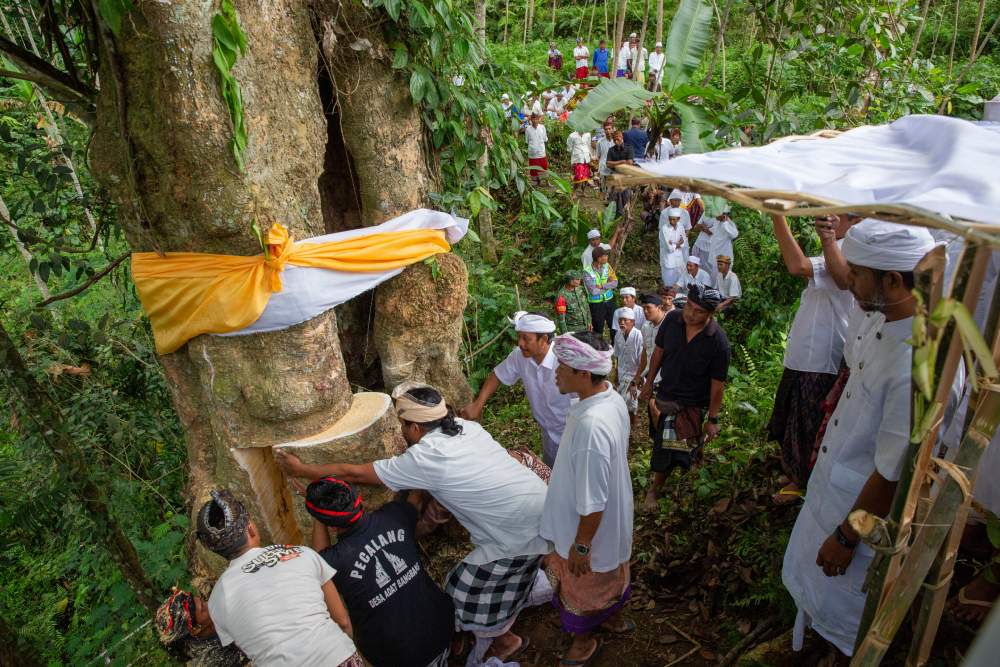
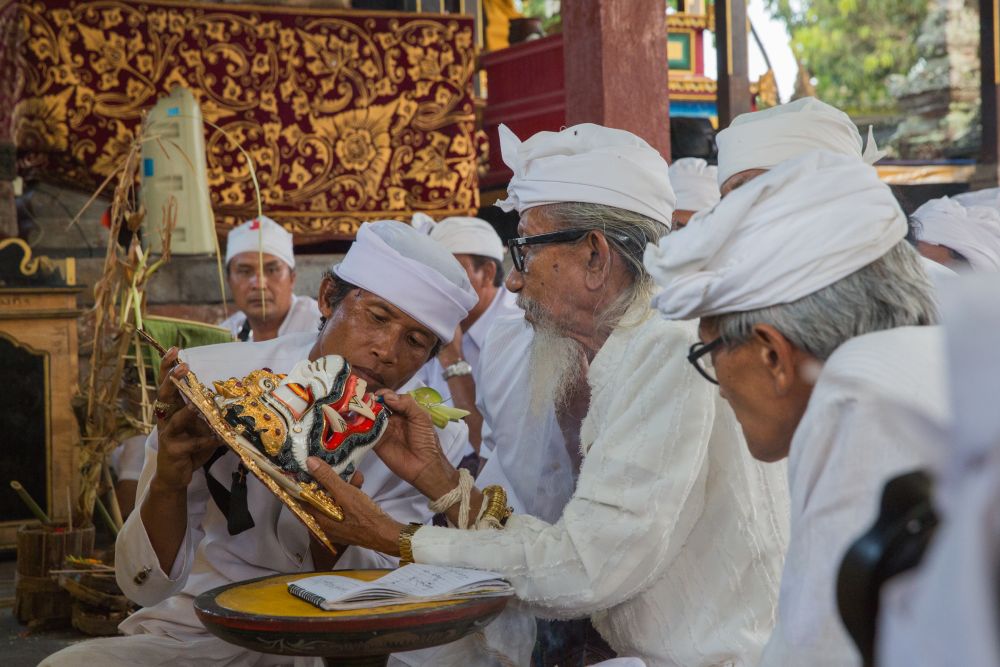
Photo by IB Putra Adnyana
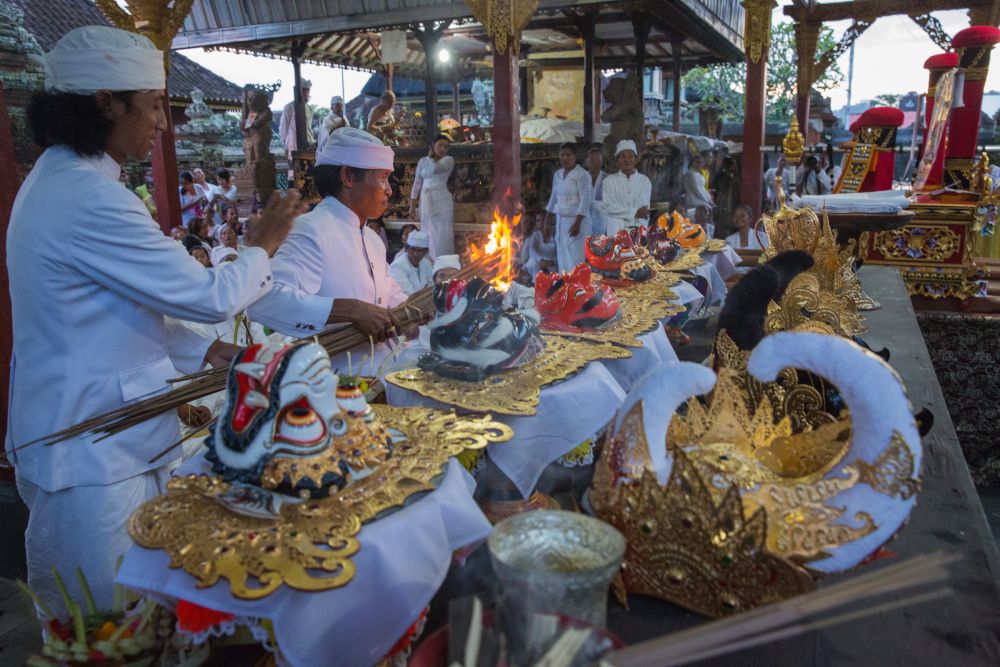
Photo by IB Putra Adnyana
Masks made for Balinese dancers and religious performances are not just performative decorations: they are sacred objects. Thus a long, arduous process is necessary to make them, especially the Barong, Rangda and Dalem Sidhakarya character masks. Multiple ceremonies are required along the creation process to ensure that once complete, the mask is sufficiently tenget.
Firstly, the wood required to make a sacred mask must come from certain trees, such as the pule, sandat, jabon, kepung rangdu trees. In some cases, only the pule tree inside the Pura Dalem (Temple of Death) may be used. Sometimes, a balian may be called upon to act as a medium, this way the local community can hear directly from the temple deity what would be used in the creation of a sacred mask.
Once the type of wood has been determined, a tree is not completely felled for this purpose. Instead, part of the tree, just enough for the mask, is removed in a process called ngepel. Any masks made from the same tree are thus considered ‘siblings’, or masemeton. After the wood is taken, and offerings presented to the tree, the wood must be symbolically touched (or ‘stepped on’) by the gods in a ritual process called napak, before the woodcarver can begin.

Once completed, masks are ceremonially cleansed (malaspas ceremony) and then brought to life. As mentioned, masks are sacred objects, they are a bridge to the other world and must be tenget so that dancers can enter trance when the spirits are said to enter the body and take over.
For this a pasupati ceremony is necessary, this is what brings the masks to life, which makes it a supernatural object, revered and holy. Finally, to test its sanctity, it is tested through a masuci ceremonial performance.
It is these processes that separate the ‘souvenir’ mask from the sacred mask. Thus the mask carvers of Bali are more than just artisans, they are bringers of life, creating a bridge between the seen and the unseen worlds.









